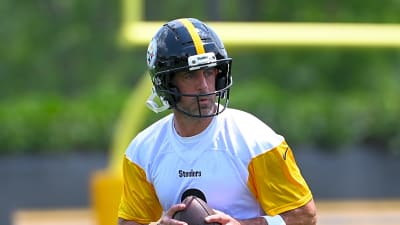
'No ceiling': How Aston Villa went from the Championship to the Champions League
Eight years ago, Aston Villa was adrift. After a disastrous Premier League season in 2015-16, which resulted in a last-placed finish and relegation, Villa managed just one win from its opening eight games in the second division and languished in 18th place.
Today, Villa is fourth in the Premier League, level on points with title challenger Arsenal and just four points off the top of the table. It's three games into a perfect Champions League season: it's played three games, won all of them and conceded zero goals.
Another victory at Villa Park in the Champions League
— Aston Villa (@AVFCOfficial) October 22, 2024
Highlights: Aston Villa 2-0 Bologna #UCL pic.twitter.com/w7LoPZAaTc
No club in England — and perhaps no club in the world — has undergone a dramatic transformation as recent as Villa's. But how did it pull it all off?
Owners with a vision. In 2018, club owner Tony Xia sold a majority stake to a consortium led by Nassef Sawiris and Wes Edens. (Americans may recognize Edens owns the NBA's Milwaukee Bucks.) Together, they made Villa fans a promise: Champions League soccer, and soon.
When Sawiris and Edens took over, that seemed far-fetched; Villa was still in the second division. But a quick promotion back to the Premier League and a few seasons in the middle of the table steadied Villa's ship. By 2020, Villa had growth potential — and that potential attracted Spanish coach Unai Emery, a renowned master of European competitions. He pushed Villa from mid-table to the top four in two seasons flat to make good on Sawiris and Eden's lofty promise.
Clever transfers. While Villa is hardly destitute, it's no Manchester United; it needs to be smart with its money when investing in players. Its smartest investment yet? Argentinian goalkeeper Emi Martinez, who arrived in 2020 from Arsenal for $25 million. (By contrast, Brazilian goalkeeper Alisson joined Liverpool two years earlier for double the price.)
The transfer was a shot of adrenaline for Villa, but it also benefited Martinez. His work for the club earned him a starting position in the Argentinian national team, and two years later, in 2022, he lifted the World Cup — and the Golden Glove award for the tournament's best goalkeeper.
The best of the best.
— Aston Villa (@AVFCOfficial) June 5, 2024
Enjoy @EmiMartinezz1's highlights from Aston Villa's 2023/24 campaign. pic.twitter.com/mQKrHULkiK
Learning from the lower divisions. Villa never did a wholesale clear-out of its players from the second division. Instead, it developed them, paying close attention to each athlete's ceiling and selling them on when it was reached. To Villa's surprise, several players — Scotland's John McGinn and England's Tyrone Mings — never hit their ceilings and continued improving with the team.
Villa started scouring the lower divisions for players, believing it could acquire future stars at bargain prices. It found Ollie Watkins at Brentford and turned him into one of the most productive strikers in the world; it found Morgan Rogers at Middlesbrough and morphed him into a Champions League-caliber winger.
Morgan Rogers hit the cold celebration after scoring the equaliser vs. Fulham
— ESPN UK (@ESPNUK) October 19, 2024
He has two goals and two assists so far this season pic.twitter.com/sU5LxG1FZQ
It took eight years for Villa to climb from the doldrums of the second division to the top of the Champions League. Who knows what the next eight years will bring? For Villa defender Matty Cash, it's impossible to say. "Since I joined, the club has just gone through the roof; the quality in every single department has gone up," he said. "The club has not got a ceiling."
Aston Villa will return to Premier League action this Saturday, Oct. 26, against Bournemouth; it will return to the Champions League on Wednesday, Nov. 6, against Belgium's Club Brugge.
More must-reads:
- Why Wrexham's financial hole is actually all part of the plan
- Spain's La Liga may play key rivalry match in U.S. in December
- The '2024 English Premier League managers' quiz
Breaking News
Trending News
Customize Your Newsletter
 +
+
Get the latest news and rumors, customized to your favorite sports and teams. Emailed daily. Always free!








